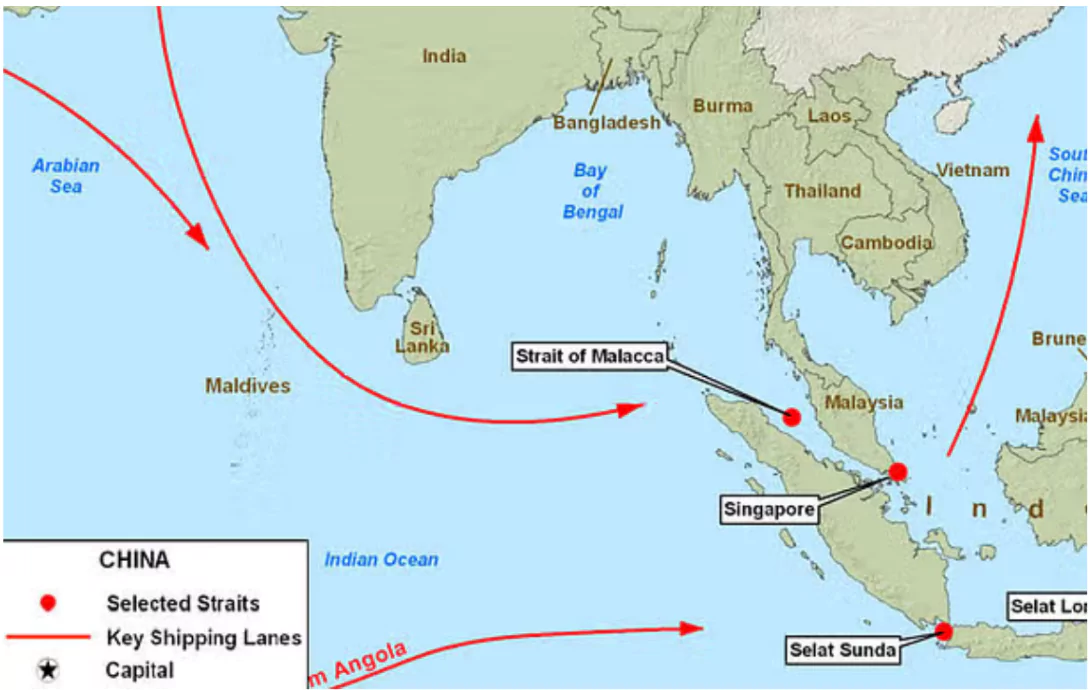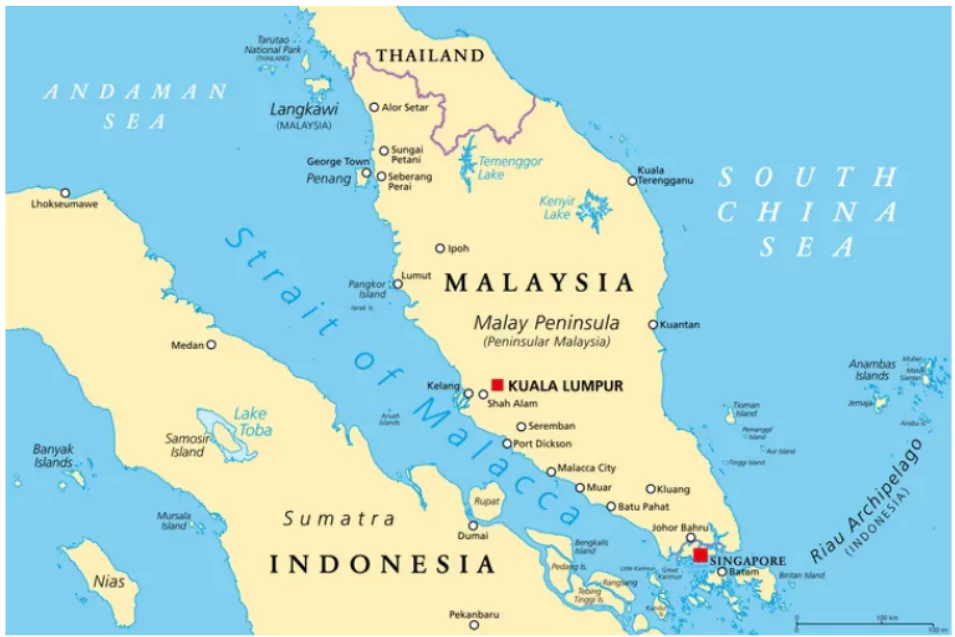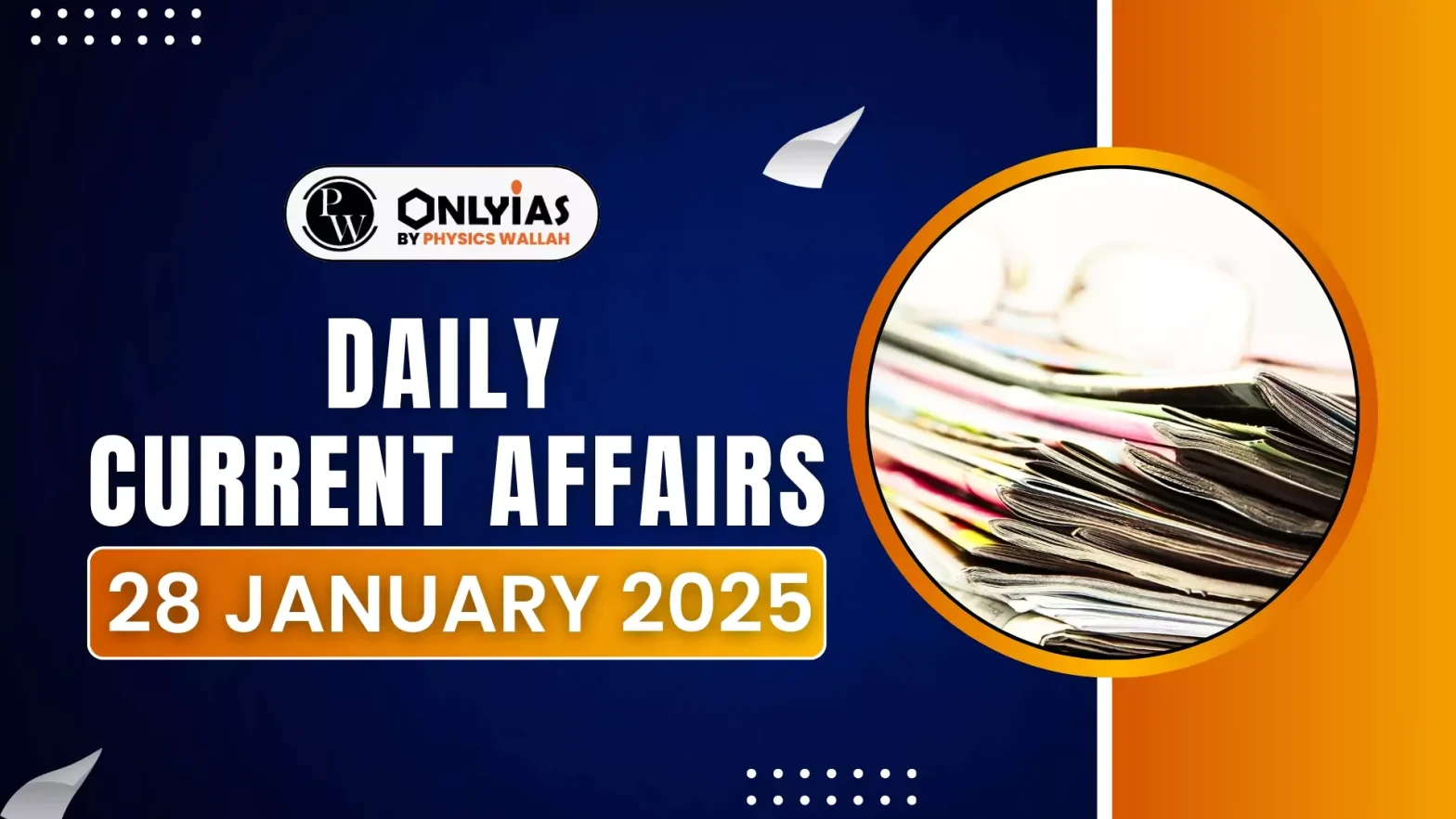President of Indonesia, Prabowo Subianto attended the 76th Republic Day of India as the Chief Guest.
Key Agreements and cooperations during the visit
- Joint Statement on South China Sea: Emphasis on a “full and effective” Code of Conduct (COC) in line with 1982 UNCLOS to maintain peace, stability, and freedom of navigation.
- Call for peaceful resolution of disputes and unimpeded lawful maritime commerce.
- Stressed adherence to international law amid China’s military assertions.
- Maritime Cooperation:
- Agreement to position an Indonesian liaison officer at India’s IFC-IOR (Information Fusion Centre-Indian Ocean Region) in Gurugram, established in 2018.
- Early establishment of bilateral maritime and cybersecurity dialogues.
- Bilateral cooperation in hydrography and submarine search and rescue.
Enroll now for UPSC Online Course
ASEAN-India Trade in Goods Agreement (AITIGA)
- It is a trade agreement that aims to increase the flow of goods between India and ASEAN member states.
- It was signed in Bangkok in August 2009 and entered into force from 2010.
|
- Defence and Strategic Ties:
- Ratification of the Defence Cooperation Agreement (DCA) for deeper defence ties.
- Deal to export BrahMos missiles worth ₹3,800 crore to Indonesia.
- Discussed cooperation in aircraft carrier construction and shipbuilding.
- Economic Cooperation:
- Focus on implementing a Memorandum of Understanding (MoU) for local currency use in bilateral transactions to enhance trade and financial integration.Agreed to the expedited conclusion of the ongoing review of the ASEAN-India Trade in Goods Agreement (AITIGA) by 2025.
- Indonesia welcomes India’s invitation to join the Global Biofuels Alliance.
- Exploration of partnerships in energy, critical minerals, and science & technology.
- For Example: Bharat Petroleum Corp (BPCL) plans to invest $121 million to develop the Nunukan oil and gas block in Indonesia.
- Cultural and Historic Ties:
- Recognition of Indian influence on Indonesian language, culture, and genetics.
- MoUs signed in health, maritime, traditional medicine, digital development, and cultural exchange.
- Space Cooperation: Enables Indonesia to use India’s Biak Telemetry, Tracking, and Command (TTC) Station (at Biak, Indonesia) for satellite and launch vehicle operations.
- Collaboration between ISRO and Indonesia’s National Research and Innovation Agency (BRIN).
- Renewal of MoU on Counter-Terrorism Cooperation: Condemnation of terrorism in all forms, with a call for global concerted action against UN-proscribed terrorist organizations and affiliates.
- Enhancement of India-Indonesia anti-terror cooperation.
IFC-IOR (Information Fusion Centre-Indian Ocean Region)
- Established: 2018 at Information Management and Analysis Centre (IMAC), Gurugram; hosted by the Indian Navy.
- Genesis: Post-26/11, IMAC was set up in 2014 to strengthen maritime security; jointly managed by the Navy and Coast Guard.
- Aim: To enhance collaborative maritime safety and security in the Indian Ocean Region in line with India’s vision of Security and Growth for All in the Region (SAGAR).
- Coverage: Indian Ocean Region and adjoining seas;
- Four sectors: Gulf of Guinea, Gulf of Aden, Arabian Sea, Bay of Bengal & Southeast Asia.
|

India-Indonesia Relations
Early Relations and Solidarity Against Colonialism (1940s–1950s)
- Historical and Cultural Ties: Over 2,000 years of shared cultural and commercial interactions.
- Hinduism, Buddhism, and Islam traveled to Indonesia from India.
- Indian epics like Ramayana and Mahabharata influence Indonesian folklore and arts.
- Shared Anti-Colonial Struggle: India strongly supported Indonesia’s independence during the Dutch colonial period (1945-49).
- Nehru banned Dutch airlines over Indian airspace and provided humanitarian aid to Indonesian nationalists.
- Indian pilot Biju Patnaik rescued key Indonesian leaders, Sutan Sjahrir and Mohammad Hatta, during the Indonesian revolution in 1947.
- Strengthening Diplomatic Ties: President Sukarno was the Chief Guest at India’s first Republic Day (1950).
- Treaty of Friendship signed in 1951 aimed at “perpetual peace and unalterable friendship.”
- Non-Alignment and International Cooperation: Close coordination on global issues like anti-colonialism, apartheid, and peaceful coexistence.
- Played key roles in the Bandung Conference (1955), which laid the foundation for the Non-Aligned Movement (NAM) in 1961.
Check Out UPSC CSE Books From PW Store
Decline in Relations (1960s–1970s)
- Divergence over China: While India’s ties with China soured after the 1959 Tibetan uprising, Indonesia maintained strong relations with Beijing.
- Cold War Tensions: During the 1962 Sino-Indian war, Indonesia showed little solidarity with India.
- Indonesia aligned with Pakistan during the 1965 Indo-Pak war, even supplying weapons to Islamabad.
- Internal Shifts in Indonesia: The 1965 coup led to Sukarno’s ousting and General Suharto assuming power, marking a shift in Indonesia’s foreign policy.
- Jakarta began mending ties with India, resulting in trade agreements in 1967.
- Stagnation in Relations: While key agreements like the 1977 maritime boundary pact were signed, the broader relationship remained limited due to Cold War alignments.
Revival and the ‘Look East’ Policy
- Post-Cold War Recalibration: The P.V. Narasimha Rao government launched the ‘Look East’ Policy in the 1990s, targeting stronger ties with Southeast Asia, including Indonesia.
- Economic Liberalization: India’s reforms created opportunities for economic and trade partnerships.
- Indonesia became a key partner in ASEAN for India, particularly in trade and investments.
- Comprehensive Strategic Partnership(2018): India and Indonesia elevated ties to a Comprehensive Strategic Partnership, focusing on defense, trade, and maritime cooperation.
- Shared Vision for Indo-Pacific maritime cooperation adopted during PM Modi’s visit to Jakarta.
- High-Level Engagements: Regular visits by leaders to strengthen ties.
- Sukarno (1950) to Prabowo Subianto (2025) as Republic Day Chief Guests.
- PM Modi’s visits to Indonesia in 2018 and multiple bilateral talks during ASEAN and G20 Summits.
Geostrategic Relations
- Maritime Neighbors: Shared maritime boundaries in the Indian Ocean Region (IOR).
- Strategic importance of the Straits of Malacca, a critical trade route.
- Indo-Pacific Cooperation: Adoption of a Shared Vision on Maritime Cooperation in the Indo-Pacific (2018).
- Alignment of India’s Act East Policy with Indonesia’s Global Maritime Fulcrum vision.
- Freedom of Navigation: Joint commitment to UNCLOS (1982) for a rules-based order in the Indo-Pacific.
- Emphasis on maritime security, freedom of navigation, and overflight rights.
- Regional Connectivity:
- Development of Indonesia’s Sabang Port for enhanced access to the Malacca Strait.
- Strengthened links between the Andaman & Nicobar Islands and Aceh, Indonesia.

About Strait of Malacca
- The Strait of Malacca is a narrow stretch of water, 800 kilometres long and from 65 to 250 km wide, between the Malay Peninsula to the northeast and the Indonesian island of Sumatra to the southwest, connecting the Andaman Sea and the South China Sea.
|
Check Out UPSC NCERT Textbooks From PW Store
Defense and Security Cooperation
- Military Collaboration: Garuda Shakti (Army) and Samudra Shakti (Navy) exercises enhance interoperability.
- IND-INDO CORPAT (Coordinated Patrols) to secure sea lanes and combat maritime threats.
- Defense Modernization: Indonesia’s interest in Indian defense products like BrahMos missiles and Light Combat Aircraft.
- Support for Indonesia’s defense manufacturing and modernization efforts.
- Maritime Security: Liaison officer appointed at India’s Information Fusion Centre–Indian Ocean Region (IFC-IOR) in Gurugram.
- Collaboration on hydrography and submarine search and rescue operations.
Economic Relations
- Trade Relations: Indonesia is India’s second-largest trading partner in ASEAN after Singapore.
- Bilateral trade increased from $4.3 billion in 2005-06 to $38.84 billion in 2022-23 and $29.40 billion in 2023-24.
- Indian Imports: Coal, crude palm oil, rubber, minerals.
- Indian Exports: Refined petroleum, telecommunication equipment, agricultural products.
- Investment Cooperation: Indian investments in Indonesia exceeded $1.56 billion during 2000-2024, focusing on textiles, infrastructure, and mining.
- Local Currency Settlement (LCS): In March 2024, MoU signed between the Reserve Bank of India and Bank Indonesia for trade in Rupee and Rupiah to reduce dependency on foreign currencies and deepen financial integration.
Multilateral Engagement
- Global and Regional Forums: Active participation in ASEAN, G20, IORA, and East Asia Summit.
- India’s support for ASEAN Centrality and Indonesia’s BRICS membership.
- Indo-Pacific Coordination: Synergizing ASEAN Outlook on the Indo-Pacific with India’s Indo-Pacific Oceans Initiative (IPOI).
- Cooperation on blue economy, maritime resources, and disaster resilience.
- South-South Cooperation: Collaboration under platforms like Voice of the Global South to amplify priorities of developing nations.
- Regional Security: Joint advocacy for peace and stability in the South China Sea.
- Continued focus on combating piracy, drug trafficking, and illegal fishing in the IOR.
Indo-Pacific Oceans Initiative (IPOI)
- It is a non-treaty based, voluntary arrangement launched by India in 2019 at the East Asia Summit.
- Builds on India’s 2015 “Security and Growth for All in the Region (SAGAR)” initiative.
- Aim: To promote cooperation in the Indo-Pacific region through practical collaborations across various maritime domains like security, ecology, resource management, and disaster risk reduction.
- It is based on the principle of a “free and open Indo-Pacific” and respecting international maritime laws
|
Cultural and Educational Collaboration
- Cultural Bonds: Influence of Ramayana and Mahabharata in Indonesian folklore.
- Restoration and preservation of the Prambanan Temple.
- Cultural exchanges through Indian cultural centers in Jakarta and Bali.
- Jawaharlal Nehru Indian Cultural Centre was established in Jakarta in 1989
- Educational Cooperation: Scholarships under ITEC and ICCR programs for Indonesian students.
- Collaboration between universities, including MoUs under the ASEAN-India Network of Universities.
- People-to-People Ties: Around 14,000 Indian Nationals (NRI) living in Indonesia including entrepreneurs, engineers, chartered accountants, IT professionals, consultants, bankers, and other professions.
- Enhanced connectivity with direct flights and tourism promotion initiatives like Bali Jatra.
- Joint celebration of events such as International Yoga Day.
- Skill Development: Training programs for Indonesian healthcare professionals and policymakers under Indian capacity-building initiatives.
Check Out UPSC Modules From PW Store
Indian Technical & Economic Cooperation (ITEC) program.
- ITEC, a flagship capacity building programme of the Ministry of External Affairs, has been in existence since 1964.
- ITEC has been an important vehicle for sharing knowledge and expertise with the rest of the developing world.
- It offers developing countries students the opportunity to pursue higher education and training in India.
Indian Council for Cultural Relations (ICCR) scholarships
- The Indian Council for Cultural Relations (ICCR) offers scholarships to foreign students to study in India.
- The scholarships cover a variety of courses, including undergraduate, postgraduate, and Ph.D. programs.
|
Recent Tensions in Bilateral Relations
- Citizenship Amendment Act (CAA) & National Register of Citizens (NRC): Protests in India against the CAA and NRC affected relations with Indonesia.
- Indonesia, a predominantly Muslim country, expressed concerns over the treatment of Muslim minorities in India.
- Jammu and Kashmir Issue: India’s revocation of Article 370 (special status to Jammu and Kashmir) in August 2019, criticized by Indonesia, leading to increased tensions.
- Economic Retaliation: In response to Indonesia’s criticism on Kashmir and CAA, India increased tariffs on Indonesian palm oil, a key export for Indonesia.
Key Bilateral Visits Between India and Indonesia
- President Sukarno’s Visit to India (1950): First Chief Guest at India’s Republic Day; signed the Treaty of Friendship (1951) to ensure “perpetual peace and unalterable friendship.”
- Prime Minister Jawaharlal Nehru’s Visit to Indonesia (1950): Strengthened ties on non-alignment and anti-colonialism; laid groundwork for the Bandung Conference (1955).
- President Megawati Sukarnoputri’s Visit to India (2002): Signed the Defence Cooperation Agreement (DCA), initiating joint military exercises and defense production talks.
- Prime Minister Manmohan Singh’s Visit to Indonesia (2013): Finalized the Extradition Treaty and MoU on Combating Terrorism, bolstering security and judicial collaboration.
- President Joko Widodo’s Visit to India (2016): Upgraded relations to a Comprehensive Strategic Partnership; signed agreements on maritime security and energy cooperation.
- Prime Minister Narendra Modi’s Visit to Indonesia (2018): Adopted the Shared Vision on Maritime Cooperation in the Indo-Pacific, aligning strategies on the Indo-Pacific region.
|
Key Challenges in India-Indonesia Relations
- Trade Imbalance: India faces a significant trade deficit with Indonesia, driven by imports of crude palm oil and coal.
- In 2022-23, India’s imports from Indonesia were valued at $20 billion, compared to exports of just $9 billion and Palm oil imports alone constitute over 50% of the trade imbalance.
- Limited Connectivity: Despite their proximity, direct air connectivity between India and Indonesia is limited, affecting tourism, trade, and people-to-people ties.
- Flights primarily connect major hubs like Delhi, Jakarta, and Bali, but there is little outreach to secondary cities.
- Dominance of China: Indonesia has accepted substantial investments under China’s Belt and Road Initiative (BRI), including the Jakarta-Bandung high-speed rail project.
- China’s investments in Indonesia exceed $20 billion, dwarfing Indian investments of around $1.56 billion.
- Regulatory and Procedural Challenges: Differences in defense procurement processes have hindered deeper military collaboration.
- Joint production initiatives, such as in defense manufacturing, face bureaucratic hurdles and acquisition delays.
- Geopolitical Divergences: Indonesia’s stance on sensitive issues like the South China Sea and Kashmir has sometimes been ambivalent.
- Indonesia’s joint development agreements with China in areas of overlapping claims in the South China Sea raise concerns for India’s Indo-Pacific strategy.
- Unrealized Economic Potential: Despite a trade value of $38.84 billion (2022-23), bilateral trade remains below its potential.
- Both countries have set a target of US$ 50 billion in trade by 2025, with untapped opportunities in renewable energy, IT, and healthcare.
- Maritime Security and Non-Traditional Threats: Both nations face challenges from illegal fishing, piracy, and smuggling in the Indian Ocean.
- The Straits of Malacca, a crucial maritime route, is vulnerable to non-traditional threats, requiring stronger collaboration.
Enroll now for UPSC Online Classes
Way Forward for India-Indonesia Relations
- Strengthen Trade: Reduce dependency on imports of crude palm oil and coal by exploring trade in renewable energy, IT, and pharmaceuticals.
- Promote Local Currency Trade: Expedite the implementation of the Local Currency Settlement (LCS) system to reduce reliance on the US dollar and enhance bilateral trade.
- Encourage Investments: Address regulatory barriers and establish a dedicated facilitation mechanism for Indian investors in Indonesia’s infrastructure and energy sectors.
- Enhance Connectivity: Expand direct flights between more cities in India and Indonesia to boost tourism and business ties.
- Collaborate on developing Indonesia’s Sabang Port to enhance maritime connectivity with the Andaman & Nicobar Islands.
- Deepen Defense and Security Cooperation: Strengthen cooperation under frameworks like IND-INDO CORPAT to secure sea lanes in the Straits of Malacca and combat piracy and illegal fishing.
- Expedite the BrahMos missile deal and explore joint production of defense equipment.
- Leverage Cultural Ties: Promote shared heritage through initiatives like restoring the Prambanan Temple and celebrating cultural events like Bali Jatra.
- Increase scholarships under ITEC and ICCR programs and facilitate academic partnerships through the ASEAN-India Network of Universities.
- Enhance Regional and Multilateral Cooperation: Work with Indonesia to uphold ASEAN’s central role in maintaining peace and stability in the Indo-Pacific.
- Align Indonesia’s Global Maritime Fulcrum with India’s Indo-Pacific Oceans Initiative (IPOI) to promote a rules-based order.
- Address Strategic Challenges
- Counterbalance China: Collaborate to ensure a balanced approach to Chinese investments in Indonesia, particularly in sensitive sectors like infrastructure.
- Combat Non-Traditional Threats: Strengthen mechanisms to address challenges like smuggling, human trafficking, and drug trafficking in the Indian Ocean.
- South China Sea Code of Conduct: Support Indonesia in advocating for a rules-based order and peaceful resolution of disputes under UNCLOS (1982).
Conclusion
India-Indonesia relations have evolved through historical, cultural, and strategic dimensions, with both nations working towards enhanced cooperation across defense, trade, and maritime security. While challenges like trade imbalances and geopolitical divergences persist, continued collaboration and addressing key issues can unlock the full potential of their partnership for regional stability and growth.
Ready to boost your UPSC 2025 preparation? Join PW’s UPSC online courses today!
![]() 28 Jan 2025
28 Jan 2025



